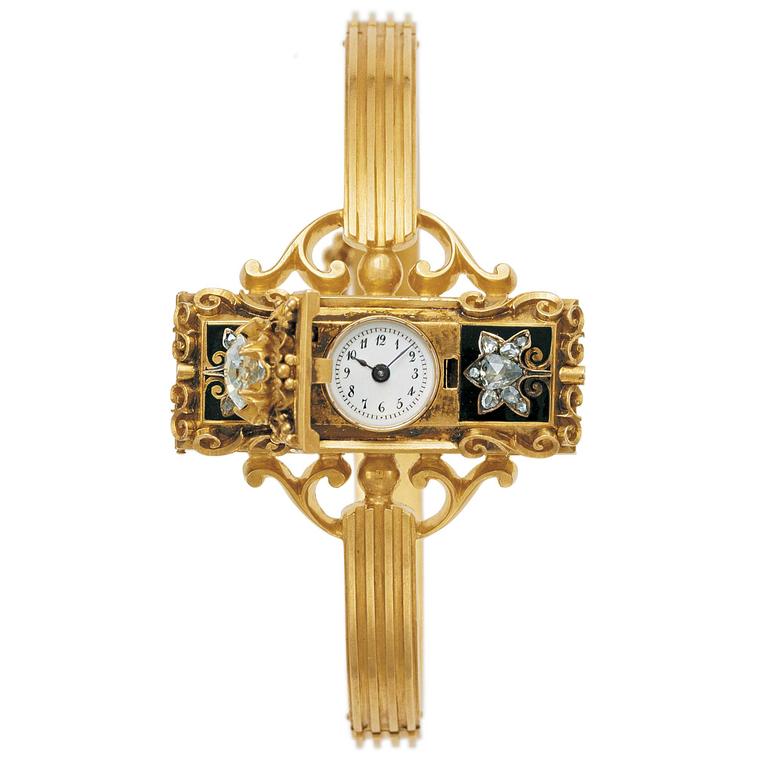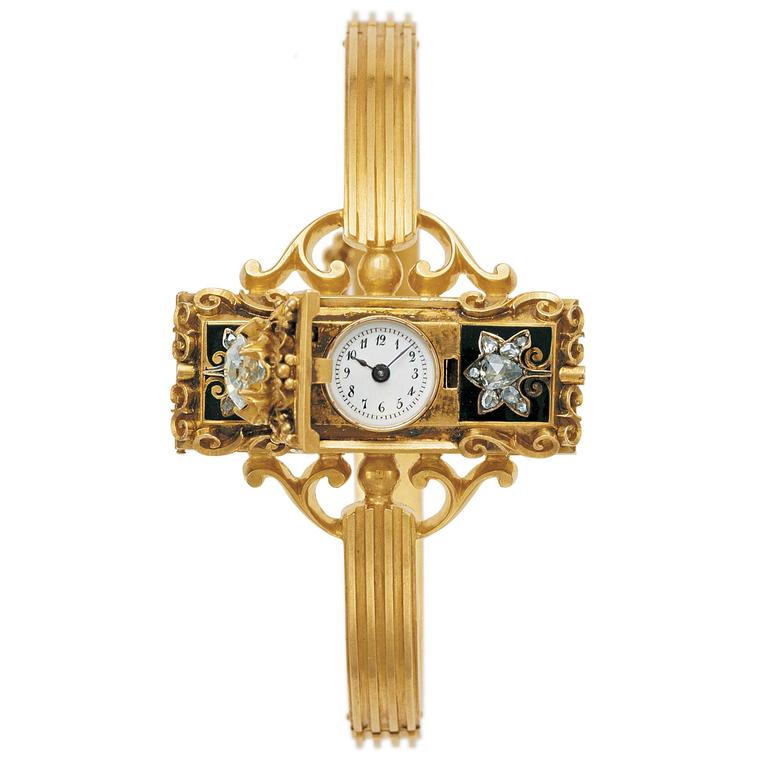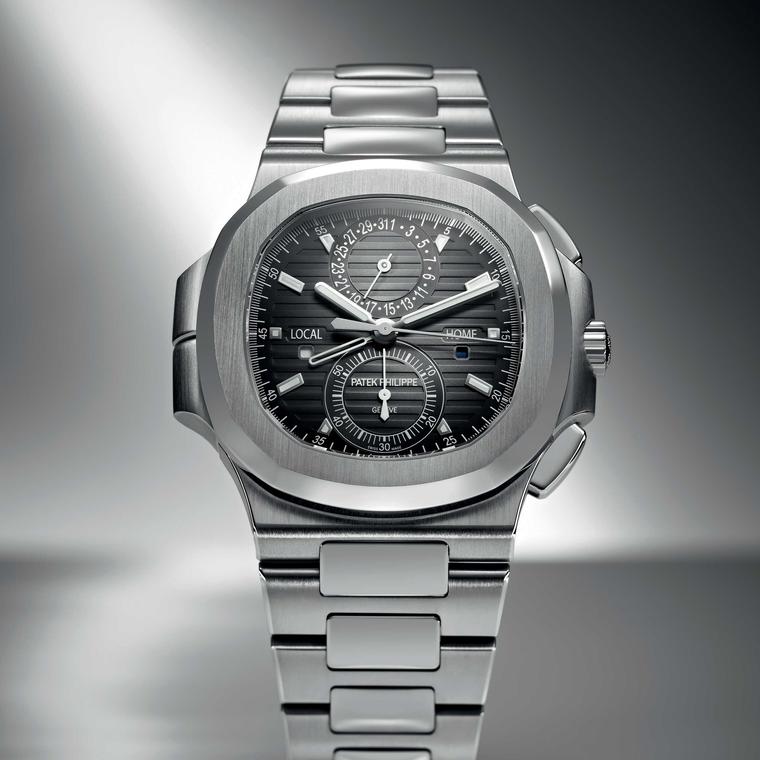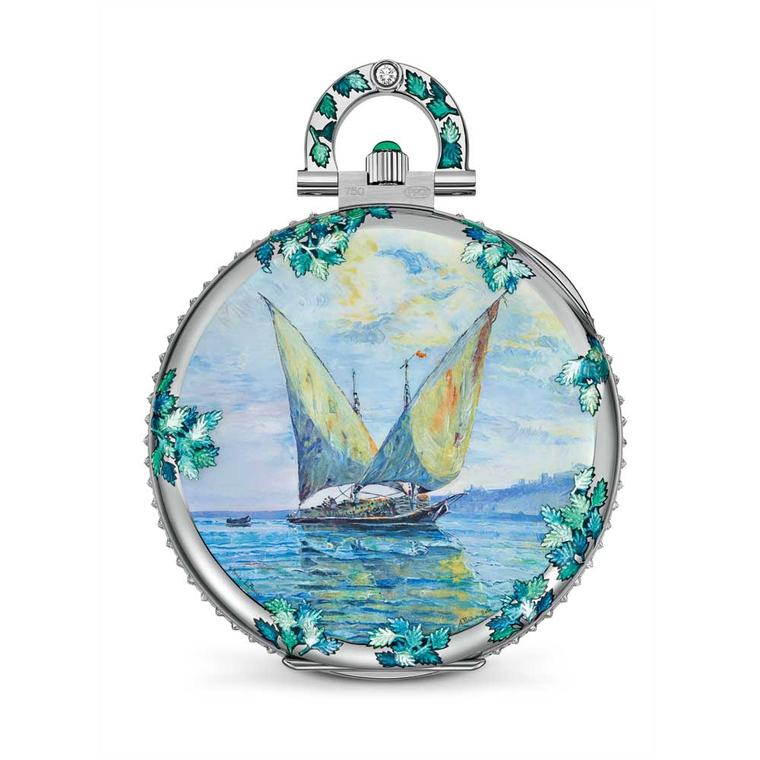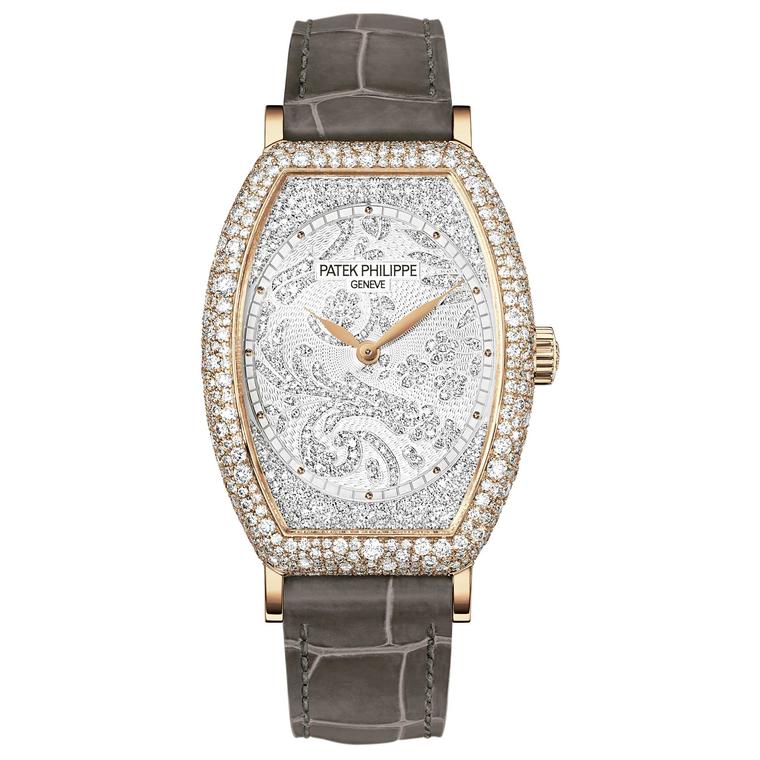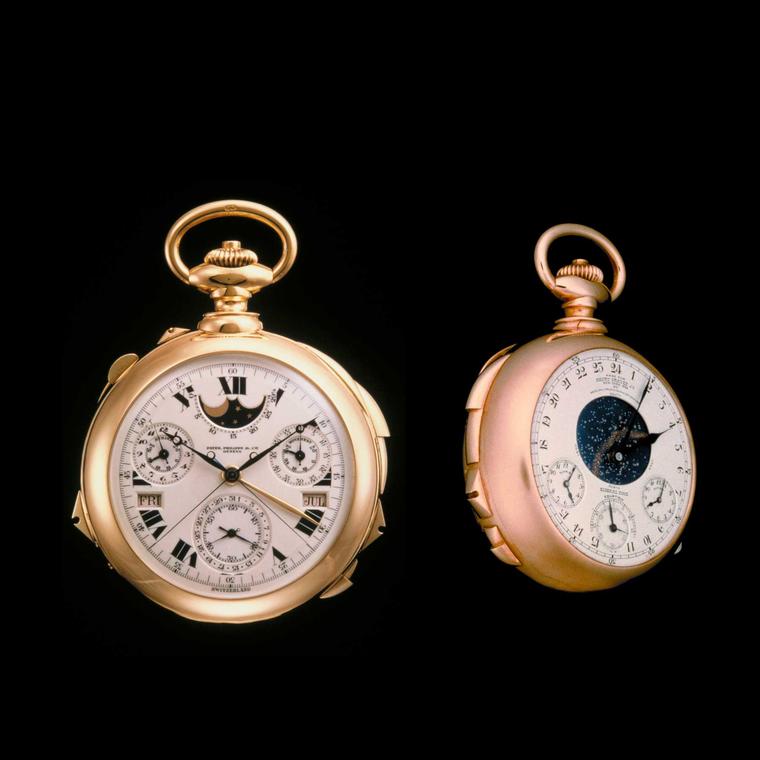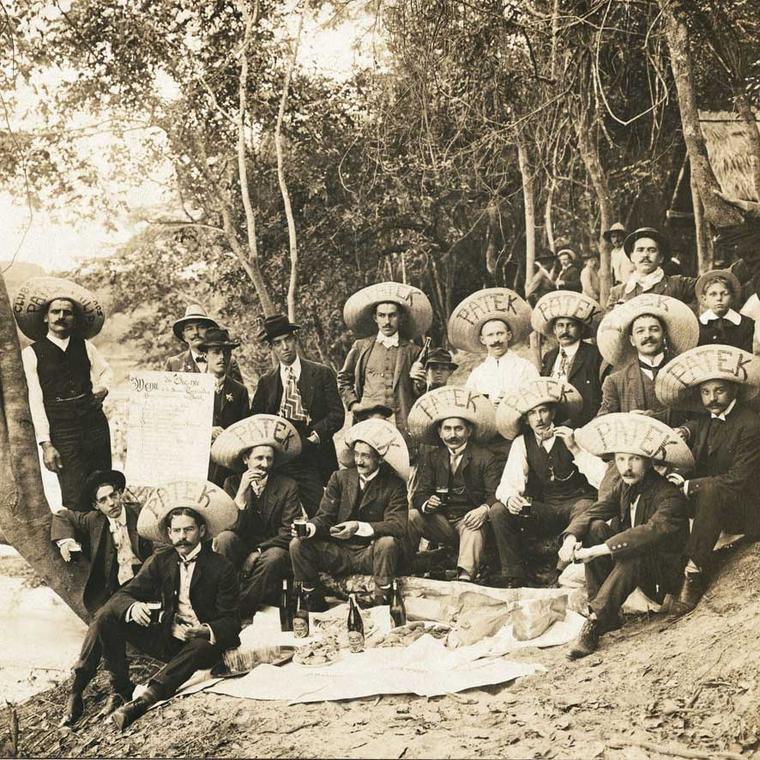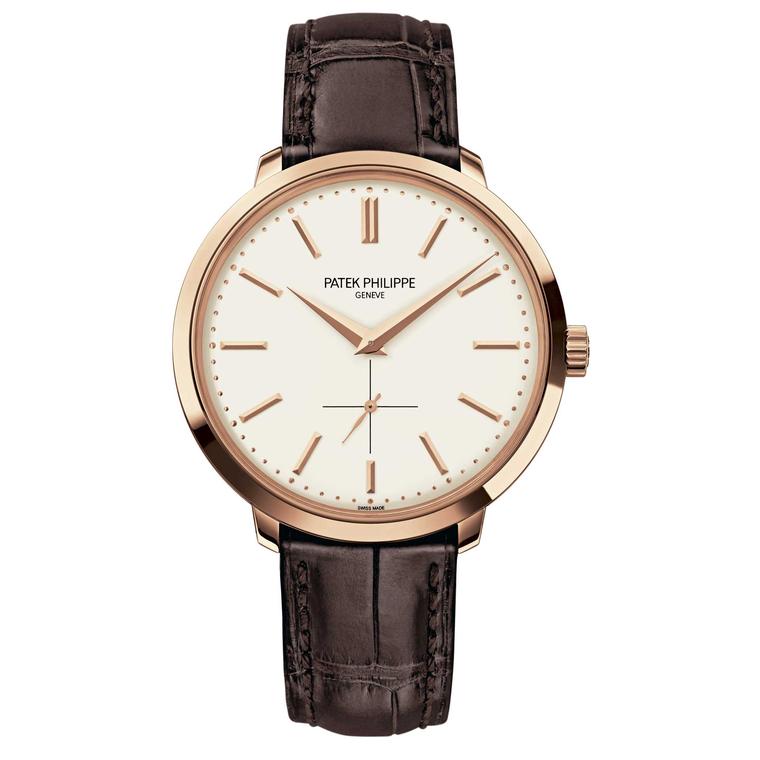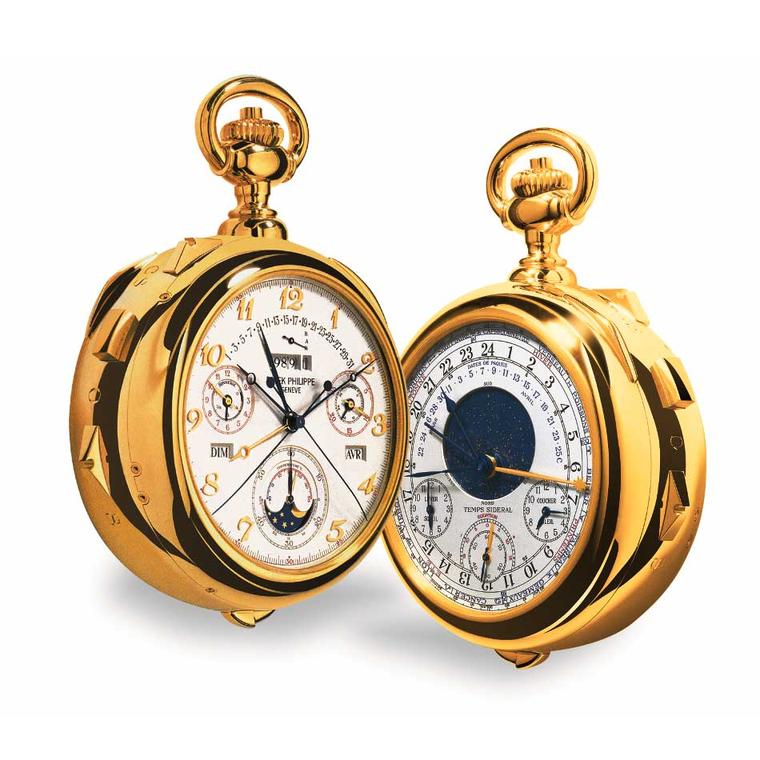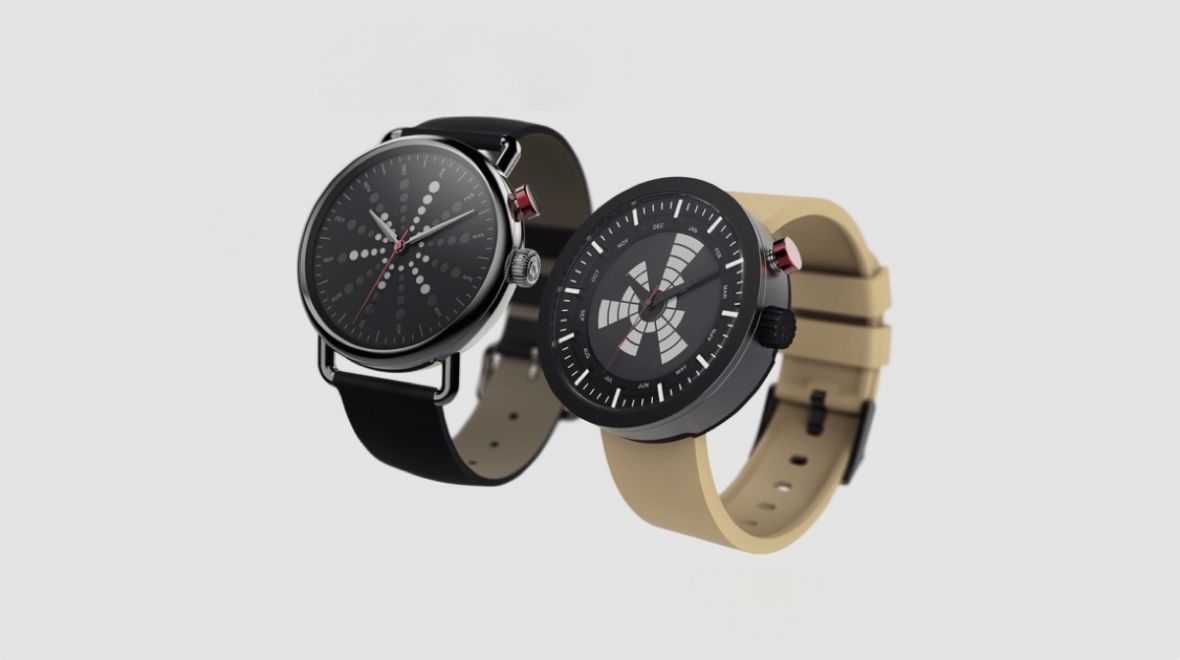Patek Philippe watches are considered to be the world’s best: full stop. Of course, there are other impeccable Swiss watch manufacturers with distinguished pedigrees and refined watches, but Patek Philippe has lodged itself in the conscience of watch lovers as the best brand of them all.
With beautiful Patek Philippe complications and supercomplications that defy the humanly possible, it is the Grand Cru of the watchmaking terroir and one of the most sought-after brands on the collector circuit.
Now in its 176th year and in the hands of a fourth generation Stern family member, Patek likes to flaunt the fact that it is the last family-owned independent Genevan watchmaker, free from the constraints of shareholders and therefore able to pursue the path it deems fit. Being the best is tough work, but Patek Philippe watches never fail to surprise. Following the sale of the Graves Supercomplication last November at Sotheby’s Geneva for $24 million, it became the most expensive pocket watch on Earth. Known as the Mona Lisa of horology, this was the second time at the rodeo for this particular pocket watch, which had surfaced in 1999 and sold for $11 million, establishing a world record at that time. However, if you are Patek Philippe, you don’t rest on your laurels, and 24 complications are an invitation to produce more.
Read about the how the Patek Philippe Henry Graves Supercomplication made history in 2015
In the mid-1980s, the Maison decided to outshine the Graves Supercomplication with an even more complicated timepiece known as Calibre 89. A horological behemoth with 33 complications, 24 hands and 1,728 parts, Calibre 89 currently occupies the podium as the world’s most complicated pocket watch and was built to celebrate the watchmaker’s 150th anniversary. To mark its 175th anniversary last year, the Patek Philippe Grandmaster Chime was unveiled, currently the world’s most complicated wristwatch with 20 complications.
Read more about the Patek Philippe 175th anniversary Grandmaster Chime
How and why this has been possible is a fascinating story that starts with two episodes of religious intolerance, persecution and exodus, and a nationalist uprising in Poland. The genesis of Patek Philippe watches is intimately linked to the city of Geneva, which had established itself as a watchmaking hub in the early 16th century, aided in part by Calvin’s strict religious agenda banning ornamentation and the wearing of jewellery, although watches were tolerated.
The watchmaking industry also got a boost from abroad when, in 1572, King Charles IX of France authorised a bloody persecution against the Protestant Huguenots, instigated by his mother Catherine de Medici. Recorded in history as the St. Bartholomew’s Day massacre, French Calvinist Protestants, which included skilled jewellers and watchmakers, were mercilessly persecuted and fled the country in horror. The same scene was repeated in 1685 and another batch of Protestant exiles left France when Louis XIV decided to enact the Edict of Fontainbleu (aka the Revocation of the Edict of Nantes). Both persecutions in France led many Protestants to seek asylum in the more compatible religious climate of Calvinist Geneva. What these intolerant rulers had not taken into account is that when a whole section of your population flees, it is often accompanied by the phenomenon of brain drain. Just look at what happened when Spain expelled the Jews and the Moors in 1492. Given the strict Calvinist mood, many of the exiled jewellers and painters turned their hand to watchmaking, marrying the refined techniques of miniature painting on enamel and gem-setting to the art of watchmaking.
In yet another chapter on exodus, Antoni Patek, a young Polish cavalry officer participating in the 1830 November Uprising – an insurrection of Poles against the invading Russian Tsarist forces – was wounded. Following the downfall, he and many soldiers of the Polish army were invited to emigrate and, after various stops in France, Patek arrived in Versoix, Switzerland, where he took painting classes and became fascinated with the watchmaking scene. His first business partner, Franciszek Czapek, a master watchmaker who had also taken part in the Uprising, was another exile and together they established Patek, Czapek & Cie in 1839. Czapek made the watches, Patek sold them, and the partnership lasted for six years before it was dissolved in 1845.
The 19th century was marked by World Exhibitions featuring the latest technological and industrial breakthroughs. During London’s Crystal Palace Exhibition of 1851, the equivalent of a third of Britain’s entire population flocked to the grand greenhouses to see the latest technological wonders, as did Queen Victoria, who spotted a lovely gold fob watch decorated with blue enamel and diamonds. A second pendant watch was also purchased by the Queen, as lavish and beautifully decorated as the first, but the great novelty here was not the delicate decoration, but the fact that it featured the first keyless winding system developed by Patek’s new business partner, the French watchmaker Jean Adrien Philippe. Following the split with Czapek, Patek was keen to find a new watchmaker for his company and Philippe fit the bill perfectly. A meticulous watchmaker, his ideas were revolutionary and Patek invited him to Geneva in 1845. Although a keyless watch might not sound like a wildly innovative breakthrough, we have to remember that, until then, pocket watches had to be wound and set with a separate key. The keyholes on the case let in dirt and water, and keys were easy to lose. Philippe’s invention of the modern winding and setting stem and crown – pull to set, push to wind – changed the nature of watches, allowing cases to be sealed and, over time, made water-resistant.
Read about Patek Philippe at Christie’s online auction
It is a common misconception that watchmakers in the 19th century were primarily interested in making pocket watches for gentlemen. In the case of Patek Philippe, women played a pivotal role in the company’s rise to fame – particularly female members of royal families or very well-to-do ladies – and the first three recorded Patek Philippe ladies’ watches sold in 1839 were to Madame Goscinska. This was swiftly followed by Princess Zubów of Russia, who bought a minute repeater detailing her family coat of arms, and even Queen Victoria bought Prince Albert a quarter-repeating chronometer with the keyless winding system. This high profile roster of queens, kings and even Popes ensured Patek Philippe’s name spread like wildfire among the courts of Europe, and as far abroad as Siam, tempting King Rama V to visit Geneva and carry home 56 timepieces. Not just royals, but intellectuals, writers, musicians and scientists came to the firm for their watches, including Tolstoy, Tchaikovsky, Wagner, Einstein and even Marie Curie.
We also have the trend-setting Countess Koscewicz of Hungary to thank. In 1868, she was the first woman to defy the convention of wearing a timepiece as a pendant, and fastened one to her wrist after purchasing Patek Philippe’s first wristwatch – an elaborate rectangular case housing a baguette movement and presented on a yellow gold bracelet. Just 10 years later, the fashion had reached England as ladies on foxhunts strapped their Patek Philippe watches to their wrists on leather bracelets to be able to consult the time without having to let go of the reins.
Business was flourishing, prizes were being awarded for their superlative precision, patents were being filed for more innovative solutions to watchmaking and, in 1851, Patek Philippe decided to relocate into the handsome building on Rue du Rhône overlooking Lake Geneva, which is still in use today as the Maison’s boutique. However, the Crimean War was taking its toll in France, Great Britain, Turkey and Russia, so it was time for the company to look for new markets further afield. America was the first port of call, and Patek was impressed by the scale of Charles Lewis Tiffany’s boutique. In 1851, the two companies established a partnership maintained to this day in which Tiffany vowed to “attend to the interest of Patek Philippe in America as if it were his own.”
Patek Philippe’s American chapter is one of the most colourful in its long history, featuring a star player who was recently resuscitated in the sale of the most expensive pocket watch on Earth, selling for $24 million last November. Known as the Graves Supercomplication, this astonishing mechanical masterpiece with 24 complications was born, quite literally, out of envy. American automobile magnate James Ward Packard was blessed with a prodigious mechanical mind and became fascinated with Patek Philippe’s complicated machines. He started his watch collection in 1905 but his ultimate fantasy was to possess a grand complication – a watch with more than three complications – and in 1927 received his Patek Philippe astronomical pocket watch. Decked out with a personalised rotating celestial chart representing the night sky of his hometown Warren, Ohio, it also featured a minute repeater, a perpetual calendar with Moon phases, sunrise and sunset indications, and an equation of time. Meanwhile, the Wall Street tycoon Henry Graves Jr., who was a regular client at Tiffany & Co. and an avid Patek Philippe collector, got wind of Packard’s grand complication and was damned if he wasn’t going to get one too. The brief to Patek Philippe was simple. Graves wanted the “most complicated watch on Earth” and, in 1933, was presented with a pocket watch that fit the bill to perfection. Known as the Graves Supercomplication, the two-faced watch was endowed with a staggering 24 complications and, like his rival, a celestial chart of the night sky over New York.
Read more about the history of the Henry Graves Supercomplication
Beyond the stratospheric value of this pocket watch, the Supercomplication tells us a great deal about the prevailing spirit at Patek Philippe. Challenges are the motor behind the Maison, and resting on your laurels is not an option. In 1989, Patek decided to go one step – make that nine steps – further than the Graves Supercomplication and produced Calibre 89 to coincide with its 150th anniversary. Currently the world’s most complicated heavyweight champion, Calibre 89 has 33 complications – one of the rarer ones being the ability to display the coming year’s Easter date set by complex astronomical calculations until 2017.
On the subject of important historical dates, the firm turned 175 last year and put on a horological banquet few watch fanatics will ever forget. In pride of place was the Patek Philippe Grandmaster Chime, Patek’s most complicated wristwatch (remember Calibre 89 is a pocket watch) with 20 complications – a grande sonnerie and date repeater in a double-faced, ornately relief-engraved gold case of epic proportions. The World Time Moon watch and the Multi-Scale Chronograph were also decked out for the party in both men’s and women’s watches, and in limited editions to mark the grandiose 175th anniversary.
View the 175th anniversary collection of Patek Philippe watches
Complications of every possible flavour for men and women have marked Patek Philippe’s 176 years of history. Some are destined to be admired from afar, others to be worn and enjoyed on a daily basis. If we take a look at the current collection of Patek Philippe watches for men, the most populated categories are Grand Complications and Complications, and the sky really is the limit when it comes to choosing between minute repeaters, spilt-seconds chronographs, perpetual calendars, tourbillons, Moon phase indicators, world timers, sidereal time, sky charts, phases, and orbits of the Moon.
Beyond the categories of Complications and Grand Complications, certain core collections have become classic references in both men and ladies’ watch categories. The Patek Philippe Nautilus, Calatrava and Gondolo collections are perennials and have become iconic watches.
1932 was an auspicious year at Patek Philippe and marked the arrival of Jean and Charles Henri Stern as the new proprietors of the brand, and also signalled the birth of the Calatrava watch collection. Understated, minimalist and elegant, the round case and legible dial of the Calatrava captured the spirit of the Maison to perfection. Named after the Calatrava cross, which has been used as Patek Philippe’s emblem since 1887, Ref. 96 was followed two years later by the first Calatrava watch for women.
Another watch with a colourful history is the Gondolo. Back in 1872, Patek established his first commercial ventures with South America and forged a lasting relationship with the luxury jewellery company Gondolo & Labouriau in Rio de Janeiro. The enterprising Brazilian jewellers came up with an ingenious marketing plan and, between 1902 and 1907, offered their customers access to the “Gondolo Gang” – an exclusive club of 180 members with a weekly subscription fee that was, in effect, a payment plan to buy a Chronometro Gondolo made exclusively for them by Patek Philippe. Glamorous picnics, parties and even a special piece of music known as the Patek Waltz by F. Santini was played at all the club’s events for the 79 weeks it took its members to raise the money. There was also a lucky draw with the winner not only receiving the Chronometro Gondolo but also a reimbursement all the money they had paid. In 1993, Patek Philippe decided to revisit this legendary Latin American timepiece and launched a collection for men and women in tonneau, cushion-shaped and rectangular cases with a clear allusion to the Art Deco aesthetics prevailing at the time of its Brazilian ancestor.
In 1976, Patek released a sports watch designed by Gérald Genta made in stainless steel. The Patek Philippe Nautilus watch was unlike any other in the collection and stood out with its large 42mm case diameter and bold, contemporary aesthetics designed to evoke the shape of a porthole window. Commanding as much in price as a gold dress watch, the Nautilus caused even more shock waves than the Royal Oak watch – also designed by Génta and launched by Audemars Piguet in 1972. Affectionately known as the Jumbo because of its size and the protruding ears on either side of the case, the Patek Philippe Nautilus watch was designed for underwater adventures of up to 120 metres, and although it did not go down immediately well with the purists, the Nautilus is now an icon.
The impeccable mastery practiced by the watchmakers is perpetuated on the case and dial thanks to Patek Philippe’s Rare Handcrafts department. Ever since its foundation in 1839, the company employed local artisans to decorate its watches. An unadorned pocket watch was unthinkable and starting with ornate engraving and guilloché, and moving on to the Genevan speciality of miniature portrait painting in enamel, Patek Philippe watches became known throughout Europe for their exquisite artistry. With the advent of industrialisation, many of these artistic crafts fell out of favour and almost died out. The Stern family realised the threat this posed and, in spite of a lack of demand for rare enamelled pieces, kept a retinue of artists on board to safeguard their ancient professions. Every year, about 40 one-of-a-kind pieces are created, including the wonderful domed table clocks that provide a perfect canvas for cloisonné enamelling. The arts of marquetry, gem-setting, guilloché, chainsmithing, enamelling – closionné, champlevé, paillonné and miniature enamel painting – and engraving are all revered and supported at Patek Philippe. Watching Thierry Stern, the current president, enthuse about his master craftsmen has a touch of the Medici patron lauding Michelangelo’s latest work.
Read more about the Patek Philippe Rare Handcrafts department
Every last aspect of a Patek Philippe watch, from head to toe, from conception to final assembly and decoration, is made entirely in-house. For a crowning touch, Patek Philippe launched its very own quality label – the Patek Philippe Seal of 2009 – which covers the entire watch, not just the movement, as well as the lifetime maintenance of the watch. This is not something many watchmakers offer but fits in perfectly with its philosophy. Who hasn’t seen those glossy magazine ads with the emotionally targeted copy: “You never actually own a Patek Philippe, you merely look after it for the next generation”?
Read more about Patek Philippe on our list of top 10 women’s watches
SOURCE:http://www.thejewelleryeditor.com/watches/article/patek-philippe-watches-best-in-the-world/
